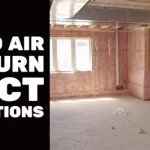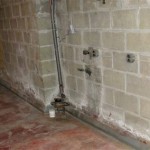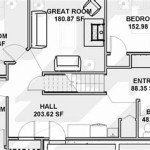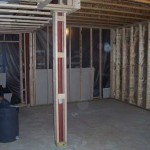Safe Radon Levels in Basements: Understanding the Basics
Radon, an invisible, odorless, radioactive gas, can pose a significant health risk when present in elevated concentrations indoors. Basements, due to their tendency to accumulate radon, warrant special attention to ensure safe radon levels.
The United States Environmental Protection Agency (EPA) recommends maintaining indoor radon levels at or below 4 picocuries per liter (pCi/L). This level minimizes the risk of developing radon-induced lung cancer, the leading cause of lung cancer in non-smokers.
Sources and Pathways of Radon Entry
Understanding how radon enters basements is crucial for effective mitigation. Radon originates from the decay of uranium and thorium in the soil and underlying rock formations. It seeps through cracks and openings in basement walls, floors, and foundations.
Factors influencing radon entry include:
- Soil composition
- Presence of geological faults
- Basement construction and sealing
- Ventilation rates
Health Risks of Radon Exposure
Long-term exposure to elevated radon levels can lead to serious health problems, primarily affecting the lungs. Radon exposure increases the risk of developing:
- Lung cancer
- Respiratory infections
- Cardiovascular disease
The severity of health effects depends on the duration and concentration of radon exposure.
Testing and Mitigation
Testing for radon is essential to determine if mitigation measures are necessary. Radon testing kits are available for purchase or can be obtained from a qualified radon professional.
If radon levels exceed the EPA recommended limit, mitigation systems can be installed to reduce radon concentrations. Common mitigation methods include:
- Sub-slab depressurization (SSD) system
- Sealing cracks and openings
- Increasing ventilation
It is important to consult a qualified radon mitigation contractor for professional guidance and installation.
Long-Term Monitoring and Maintenance
Once a radon mitigation system is installed, it is essential to monitor radon levels regularly to ensure continued compliance. Periodic testing should be conducted every 2-4 years, especially after any changes to the basement structure or ventilation system.
Proper maintenance of the mitigation system is also crucial. This involves checking for leaks, cracks, and any damage that may compromise the system's effectiveness.
Conclusion
Maintaining safe radon levels in basements is a crucial health and safety measure. Understanding the sources and pathways of radon entry, recognizing the health risks of exposure, and implementing effective mitigation strategies are essential steps to minimize radon-induced health risks.
By following these guidelines and working with qualified radon professionals, you can create a healthy and radon-safe environment in your basement.

Are Your Radon Levels Safe Free Test Utah Services

Radon Levels In New York Contractor Tests Syracuse Binghamton Utica

Radon In The Home Mass Gov

Radon Levels In New York Contractor Tests Syracuse Binghamton Utica

The Air Report Radon 2024 Edition

What Kind Of Radon Reduction System Is Best Trinity Electrical Services Inc

Guide For Radon Measurements In Residential Dwellings Homes Ca

Radon Facts Faq What Is Raleigh

What Is Radon Testing And A Safe Level

Public Facilities Recording Safe Radon Levels My Prince George Now







